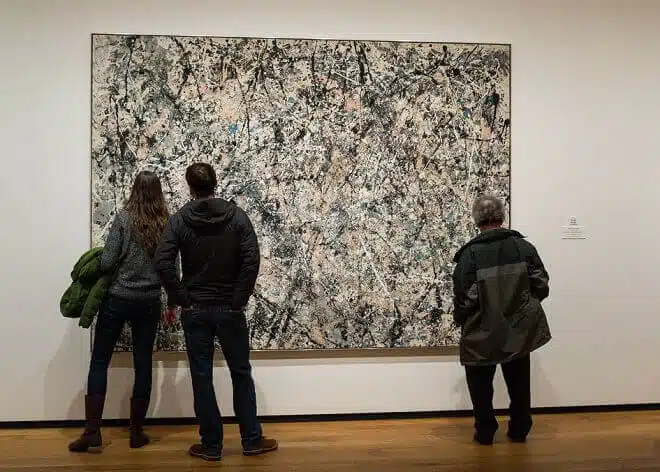Active listening is a transformative communication technique that goes beyond mere hearing to involve full engagement, comprehension, and reflection of what is being said. At its core, active listening is about giving one’s undivided attention to the speaker, seeking to understand their message and emotions without immediate judgment or response. This approach fosters an environment of respect, empathy, and openness, enabling deeper connections and more effective communication.
In team settings, active listening becomes an indispensable tool. It empowers team members to express their thoughts and concerns freely, knowing they will be heard and understood. This leads to more innovative solutions, as diverse viewpoints are acknowledged and integrated. Moreover, active listening helps to clarify misunderstandings and preempt potential conflicts by ensuring that all parties have a shared understanding of discussions and decisions.
Active listening is not passive; it requires effort, practice, and a genuine intention to understand the speaker. It involves nonverbal cues, such as nodding and maintaining eye contact, and verbal affirmations, such as summarizing and asking clarifying questions. By mastering active listening, individuals and teams not only enhance their communication skills but also lay the foundation for stronger, more resilient relationships and more successful outcomes.
A story on how one team learned to really listen
I was contracted to coach a small team working for a leading sports media channel with a European broadcast media company a few years back, and this highly specialized team—they called themselves APP Interfix—was assembled for an innovative goal in their industry. Comprising five experts in software development, user experience design, and project management, the team was tasked with creating an innovative user interface that would seamlessly connect television broadcasts to mobile and wearable devices for an engaging user experience. Despite their deep expertise and shared enthusiasm for the channel and their users, the team encountered turbulence in their own collaboration, struggling to synchronize their vision and efforts effectively.
Too many voices were not listening to each other
The team’s mission was quite ambitious for that time: to revolutionize how viewers interacted with sports media by integrating cutting-edge technology into a user-friendly interface. However, the team’s progress was stymied by frequent miscommunications and misaligned priorities. Debates over design and functionality often led to deadlock, with team members feeling their voices were lost in the fray. The project’s innovative potential was at risk, overshadowed by the team’s inability to collaborate as a cohesive unit.
I remember joining some of their sessions and checking how often people disagreed with each other. I think I must have counted 1 opposing voice over a new approach, the team team muddled along. You will see often times, that in these types of teams, some members speak more and longer than others. It really comes to light when you note speaking time per person, without judgement, of course, as an indication of communication in team.
You don't need to like it, just consider it.
There is scene in a wonderful movie called “Mona Lisa Smile” in which Julia Roberts shows a Jackson Pollock ‘Drip’ painting named Number 1 (Lavender Mist); to a group of art students. The art piece is not what they expect and their first reaction is that of surprise and even some disgust. The art teacher says something like the above quote; You are not required to like it, but you are required to consider it. The scene unfolds in silence as the students “consider” the painting. The movie’s message is about considering other options in many aspects, and when we truly listen, or “consider” different angles of what we are experiencing, we are seeing more and more options for ourselves, and perhaps even for the products we build.

First, partner, then listen, then ask
After I had observed the team for a few sessions, I had noticed the team wanted to talk to me more and more. Mostly individual members coming up to me for help around the very clear communication and psychological safety issue that was hovering under the surface of their quite nice conversations. Eventually I proposed the team to “consider” my findings in a mail and asked them to tell me how they wanted me to do this. They were in the driving seat. This approach to partnering with the team demonstrates a respectful method of engagement that prioritizes the team’s autonomy and readiness to address underlying issues.
The team jumped on the occasion to see my notes, and perhaps even my “diagnosis” of what was plaguing the team’s collaboration. So I showed my raw notes. I had counted the number of smiles per person (I had drawn anonymous stick figures around a table with a dot for every time they smiled while making eye contact with someone), noted their speaking time, the number of times they spoke up, and the number of times someone clearly disagreed. By observing their interactions and gathering data on non-verbal cues like smiles and eye contact, I provided a unique and tangible perspective on their communication dynamics. Presenting my observations and inviting the team to “consider” my findings, rather than imposing a solution, empowered them to take ownership of the process. Also, by showing them my raw notes, I modeled the consideration for the team as a evolving system, without judgement, serving as a non-threatening, visual representation of the team’s system at work. After a short discussion with the team on what they were observing, and what they wanted to improve, they were happy to start drawing their own Future Perfect images of what great team dynamics should look like on “my future notes”.
Getting "Active" with "deeper listening"
The power of active listening lies in its ability to bridge gaps in understanding, resolve conflicts, and build trust within any relationship—be it personal, professional, or social. By actively listening, individuals show that they value the speaker’s perspective, creating a safe space for honest and open dialogue. This not only enhances interpersonal relationships but also leads to more productive collaborations, as it encourages the exchange of ideas and fosters an atmosphere of mutual respect.
Recognizing the critical need for improved communication, I introduced the team to the concept of active listening in one of our mentoring sessions. This approach was not just about hearing but truly understanding and engaging with one another’s ideas and concerns. I believed that by fostering a culture of active listening, this team too could enhance their collaborative efforts and unlock their project’s full potential. I was not going to be able to tell them to listen to each other alone, I had to demonstrate and teach them how to start incorporating real listening skills in their daily work, as so to build a habit out of it.
Active Listening can take many forms
This team realized that, to truly collaborate they had to start listening to each other’s perspectives and consider them before responding instead of simply waiting their turn when their colleagues spoke. I proposed we worked on active listening through a number of exercises and experiments:
Reflective Listening: Our journey began with a focus on reflective listening. When a team member expressed concerns about the technical feasibility of certain design elements, I demonstrated how to reflect their concerns back to them, I modeled reflective listening by paraphrasing their concerns, demonstrating how to acknowledge and validate feelings without immediately jumping to solutions, showing understanding and empathy. This practice was then mirrored in team interactions, creating a space where concerns could be voiced and addressed without defensiveness. The team started to experiment with saying “I want to make sure I understand fully your idea/perspective/concern, I heard…; although it felt weird in the beginning, they were getting great results with each other, and later this practice spread when they were getting feedback from stakeholder in review sessions, or when their PO explained what they wanted from a certain requirement.
Clarifying and open ended Questions: To bridge the gaps between technical and creative visions, we practiced asking clarifying questions. For example, when discussing how to integrate wearable device data into the user interface, team members learned to probe deeper with questions like, “How do you envision this feature enhancing the viewer’s experience?”, or “What perspective needs to be addressed before taking the decision?”. This approach led to richer, more inclusive discussions and a deeper understanding of each other’s perspectives and fostered innovative problem-solving. They became so good at asking open-ended questions, that they became known as the problem solving team, which is a different story on how to protect your team from having too much success.
Summarizing: Summarizing became a key tool in their meetings, especially when finalizing decisions. By succinctly restating and getting full agreement on everyone’s understanding of the discussion points and agreed-upon actions, we ensured that all team members were aligned and felt their contributions were recognized, paving the way for a collaborative and effective decision-making process.
It will only get better
The transformation within the team was fast and remarkable. As communication, understanding and safety to speak up improved, so too did the project’s progress. The team developed a groundbreaking user interface that not only met but exceeded the project’s objectives, offering sports enthusiasts a seamless and interactive experience across television, mobile, and wearable devices. This team’s success was a testament to the power of listening, understanding, and collaborating with empathy and openness.
I truly hope Team APP Interfix’s story serves you as a powerful illustration of how active listening can deeply and positively transform team dynamics and drive success, especially in projects where innovation and collaboration are key. It underscores the importance of creating a communication culture where every voice is heard, understood, and valued. For teams and coaches alike, I hope this inspiring example of how to navigate the complexities of teamwork and turn ambitious visions into reality through the art of active listening, will help your team get better at listening to each other, to understand what is really being communicated, so they can better build and create the product their users and customers desire!






